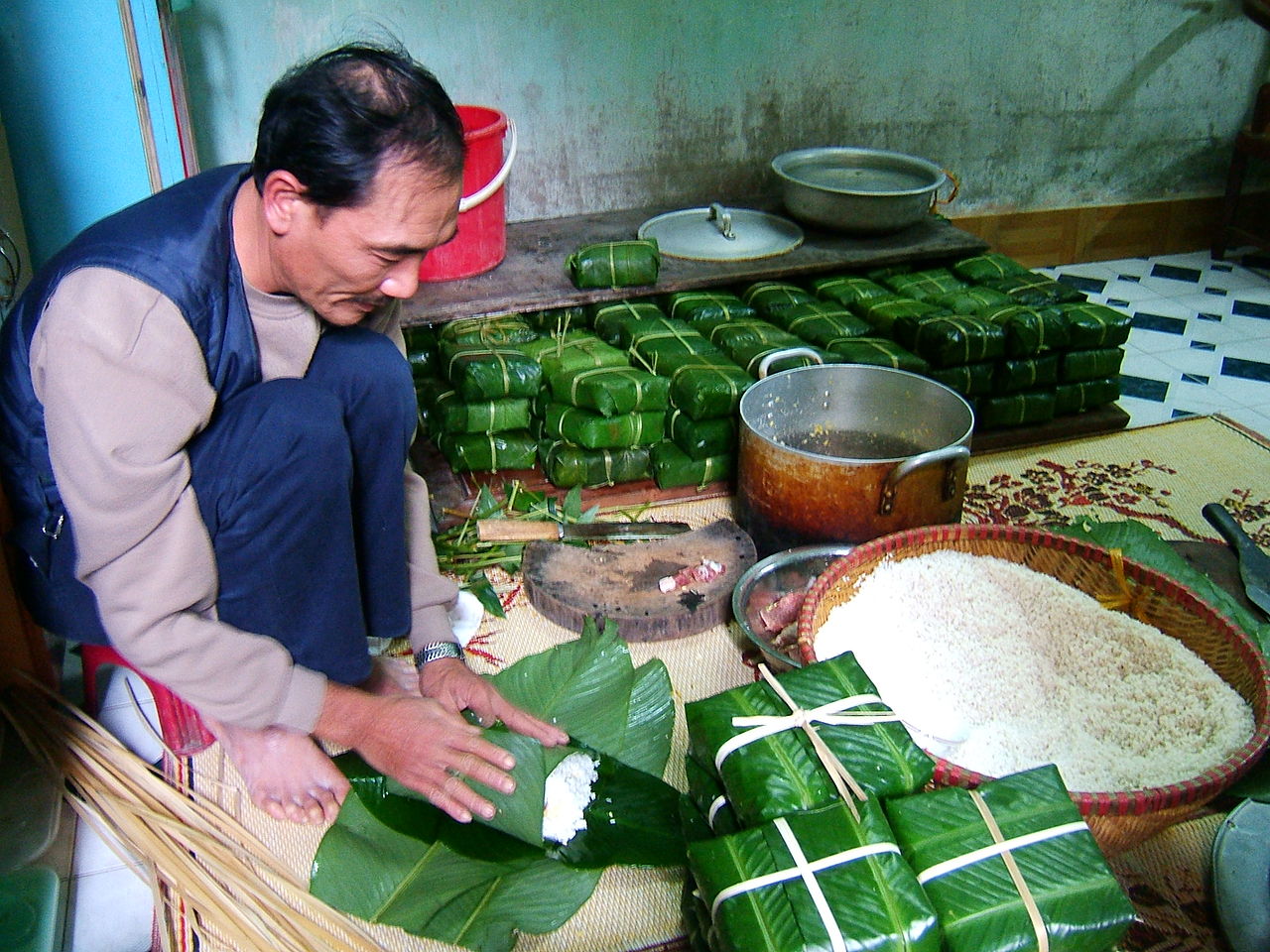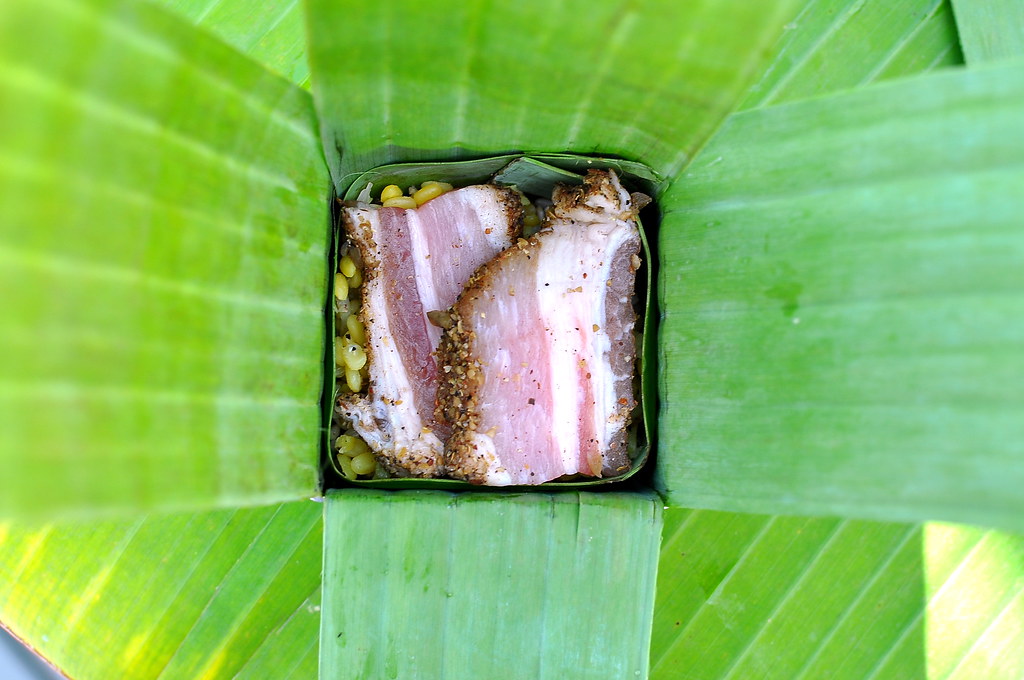What the Vietnamese Eat for Lunar New Year and the Legends Behind It
Editor’s Note: This post was made in partnership with the amazing people over at Weee!
Tết, known as Vietnamese Lunar New Year, is rich in traditions and customs, marking the arrival of spring in the lunisolar calendar.
What’s in a Name?
- Tết is grounded in the tradition of feasting well and plenty, with Vietnamese people coining the act of celebrating Tết as “ăn tết” which literally means “eating Tết.”
- The name Tết is also short for Tết Nguyên Đán, which is Sino-Vietnamese for “Feast of the First Morning of the First Day.”
Tết Traditions:
- Tết celebrations typically last three days. For many Vietnamese people, Tết is an opportunity for families to pay respects to the past and hope for prosperity in the future.
- The most common image of Tết is the sacred presence of the cây hoa mai (mai flower tree), which some in the south say brings good fortune, and cây hoa đào (peach blossom tree), which some in the north say has the power to keep evil spirits away, according to VietnamHeritage.
- The kumquat tree is also believed to symbolize fertility and fruitfulness with its many fruits.
- Other Tết customs like visiting ancestral graves with incense, food offerings and prayers are believed to have originated from Confucianism.
- Some also believe that the very first visitor the family receives in the year determines their fortune for the rest of the year. Origins of this belief, or xông đất, differ from person to person.
- Some cultural experts believe that it comes from Taoism, the Chinese philosophy that emphasizes harmony of five natural elements, so Vietnamese people would only invite those who are “compatible elements” with them.
- Others follow the zodiac system and choose the first visitor based on favorable astrology pairings.
- During Tết, children are encouraged to greet their elders and relatives with traditional greetings and wishes of prosperity and luck in exchange for red envelopes of tiền lì xì (lucky money).
- After receiving their red envelopes, people would gamble their money among family in games like bầu cua tôm cá (gourd crab shrimp fish), a popular dice game where players bet their money based on the matching pictures between the dice and the board.
- However, Tết can also cause stress for those who are struggling financially. Settling debt before the holiday has been one of the most important customs before the New Year.
Tết Legends and Treats:
- The Kitchen Gods: Influenced by long-term Chinese occupations in the past, Vietnamese people believe there is a trio of emissaries called the Kitchen Gods (Táo Quân) who report on the family’s house and affairs to the Jade Emperor during the last day of Lunar New Year.
- On every 23rd day of the last lunar month, Vietnamese people would buy golden koi fish and carps and release them into rivers and lakes, believing that they would act as mounts taking the Kitchen Gods back to heaven, according to The Smart Local.
- To keep the report “positive,” many families prepare well in advance prior to the actual holiday by cleaning and sweeping, buying new clothes, redecorating the house, cooking traditional foods — all in the hopes of ushering in luck for the New Year.
- When the Kitchen Gods are absent, Vietnamese people believe that they become more vulnerable to evil spirits. Using Buddha’s power to ward off evil, people would come together on the 23rd day of the 12th lunar month to plant a special long bamboo pole called Cây Nêu in front of the house and decorate it with red eight-sided paper that carries the symbols of Buddha’s Eightfold Path of Righteousness. The ceremony also signals the official beginning of the Lunar New Year.

- The Extraordinary Stories from Lĩnh Nam: Nothing is more iconic during Tết than the traditional bánh chưng, bánh giầy, and bánh tét, all variations of sticky rice cake. While the exact origins of these culinary classics may be lost to time, the earliest mention of bánh chưng and bánh giầy comes from a tale in the story collection “Lĩnh Nam Chích Quái” written during the Trần dynasty in the 14th century.
- Once upon a time in 1400 B.C., the Sixth Hùng King needed to choose an heir among his 20 sons. He decided to host a cooking competition, asking his sons to search for the most delicious dishes across the land as an offering for their ancestors. The poorest prince of them all, Lang Liêu, could not afford to travel far and wide like his brothers. One night as he was sleeping, a deity came to his dream and told him to use sticky rice to make a square cake (bánh chưng), symbolizing the earth, and a round cake (bánh giầy), symbolizing heaven. They would be filled with đậu xanh (mung beans) and pork, embodying the plants and animals of the land. Green leaves would be used to wrap the cake as a symbol of a mother’s protection. Lang Liêu decided to follow the instructions. Some versions of the story describe the day all the king’s sons came with their exotic dishes. Where the rest of his brothers charmed their father with exotic fruits, mushrooms, fish and other meats, it was the simplicity and purity of Lang Liêu’s humble offering that won his father’s approval to be named king.

-
- The origin of bánh tét, on the other hand, is a bit more ambiguous. Commonly served in southern and central Vietnam, some believe that Emperor Quang Trung invented the food during his campaign against the Manchu army in December 1789; the cylindrical nature of the cake comes from the emperor’s idea to turn bánh chưng into portable combat rations. Others claim it came from the past Champa kingdom and only became Vietnamese during the period of Nam tiến, where Vietnam expanded its territory and occupied Champa.
- Traditionally, many Vietnamese households would make their own bánh chưng, bánh giầy and bánh tét before Tết. Today, many people conveniently buy them directly from markets instead.

- The Five-Fruit Tray: According to the “Yulanpen Sutra,” Buddha told Maudgalyayana to prepare a five-fruit tray to protect his mother from the hungry ghosts. The five fruits’ colors represent heaven and earth according to the Taoist principles of five natural elements — metal (white), wood (blue), water (black), fire (red), earth (yellow). In modern Vietnamese culture, the fruits are arranged on a tray called mâm ngũ quả (five-fruit tray) and used as an offering on ancestral altars in a display of filial piety.
- Mứt (jam) is a special type of candied fruits served as a snack to welcome guests during this holiday period. Arranged in eye-catching ornamental trays, this special “jam” is served with tea as owners and guests partake in conversations.
- Considered a symbol of purity, thịt gà (boiled chicken) plays a central role in Tết as all tribute meals to ancestors require a chicken, whole or chopped. After being boiled, the chicken is adorned with a rose in its beak and displayed on the altar. The juxtaposition of the two adheres to the Vietnamese’s yin-yang concept.
Need to snag your own delicious treats for Tết? Order all the food items you’d need from our brand partner Weee! Have a premium quality ingredients delivered right to your door for a safe and easy Tết! Offer: $10 off first order and free delivery on orders $35+.
This post was created by Weee! with NextShark.
The post What the Vietnamese Eat for Lunar New Year and the Legends Behind It appeared first on NextShark.
✍ Credit given to the original owner of this post : ☕ NextShark
🌐 Hit This Link To Find Out More On Their Articles...🏄🏻♀️ Enjoy Surfing!



















Post a Comment